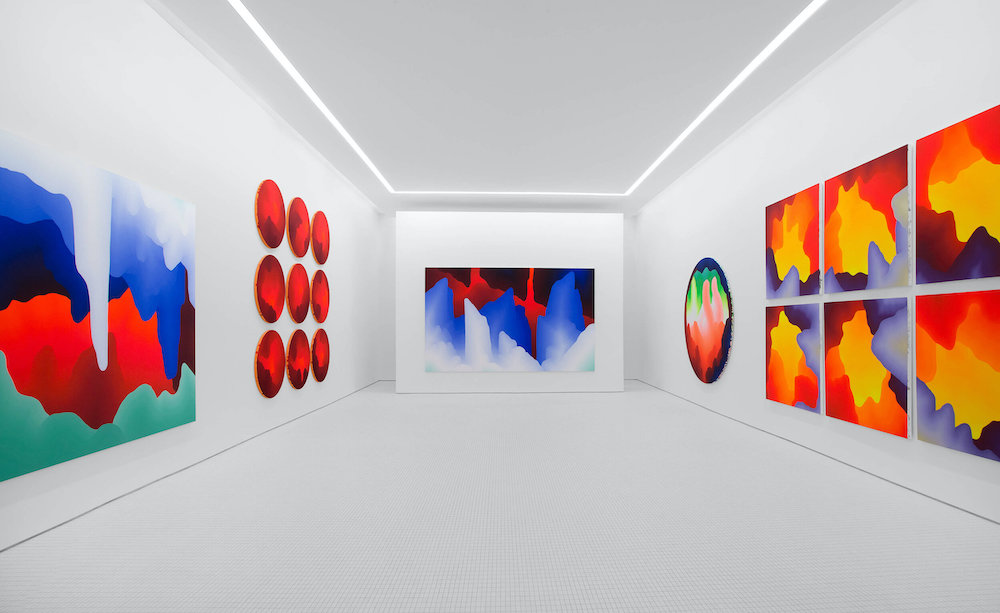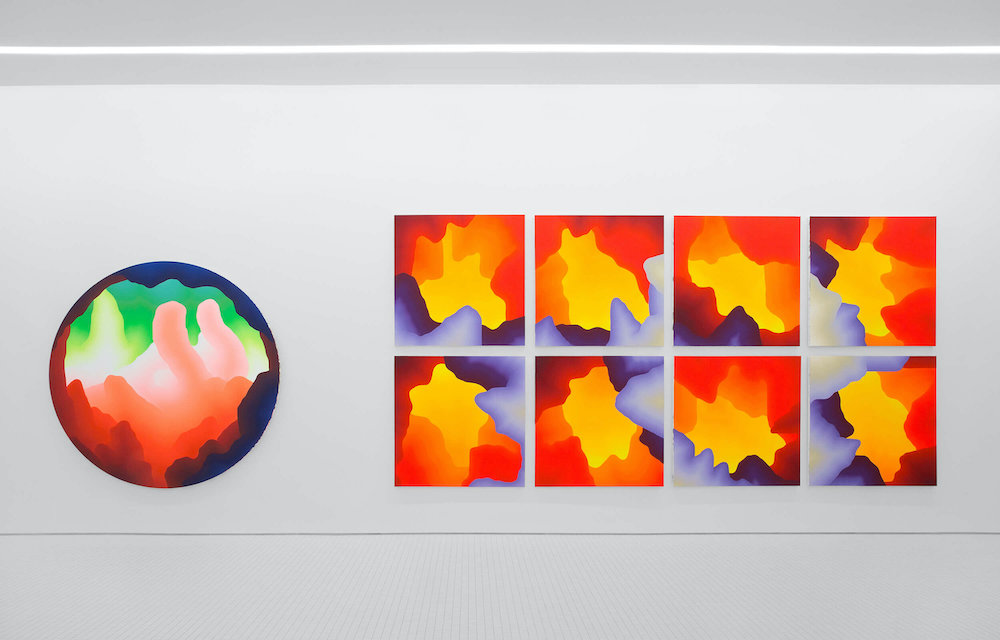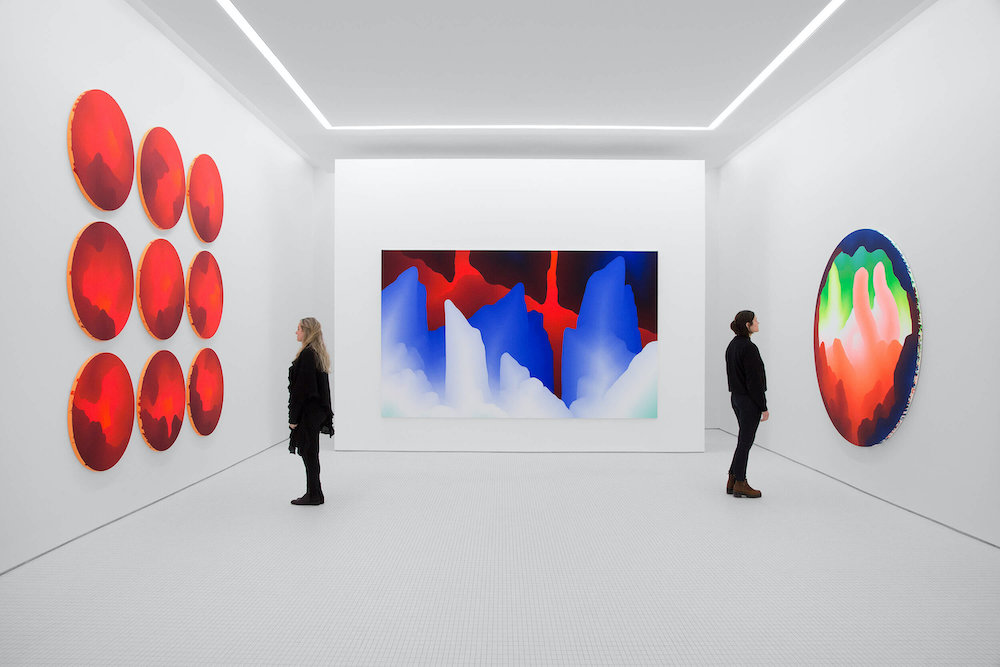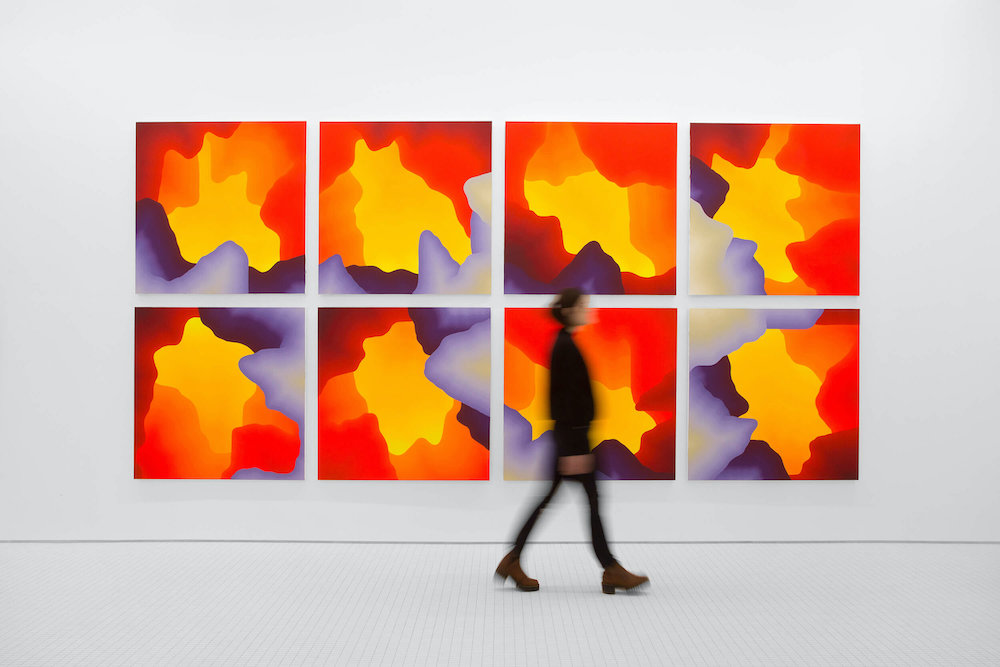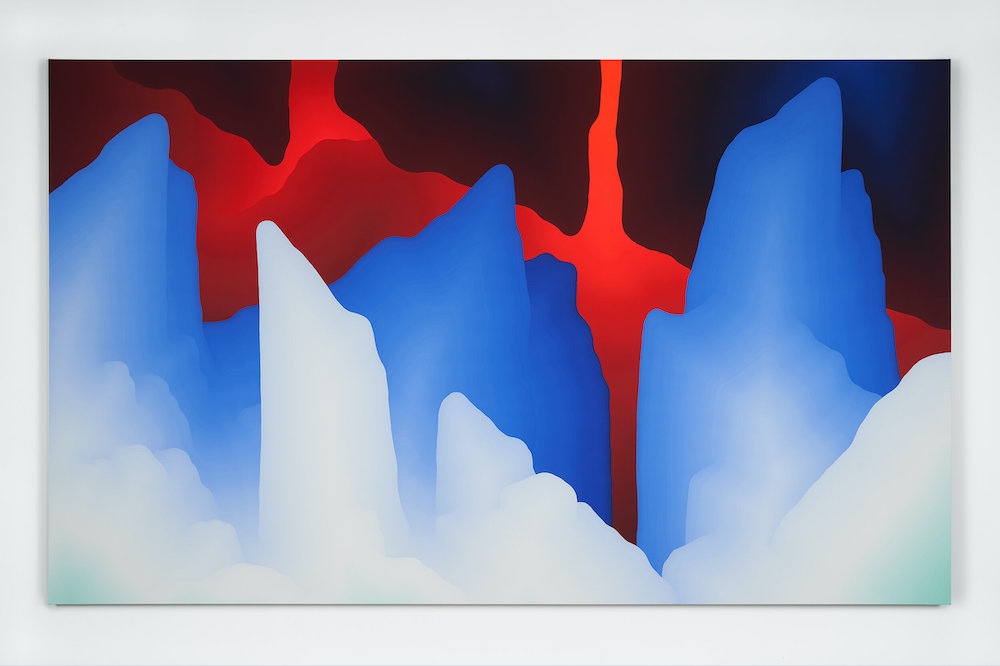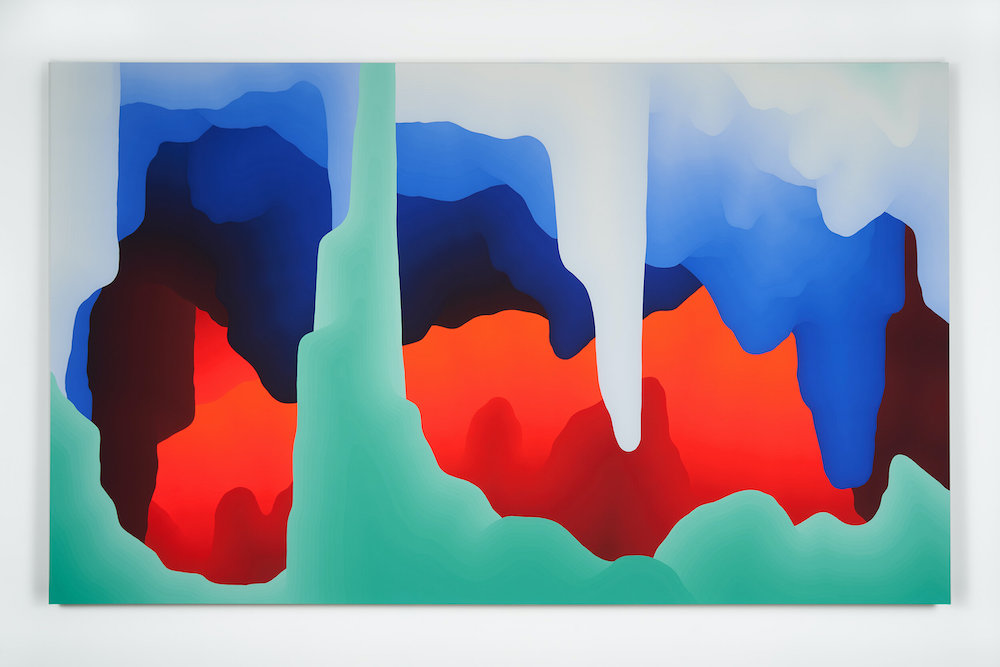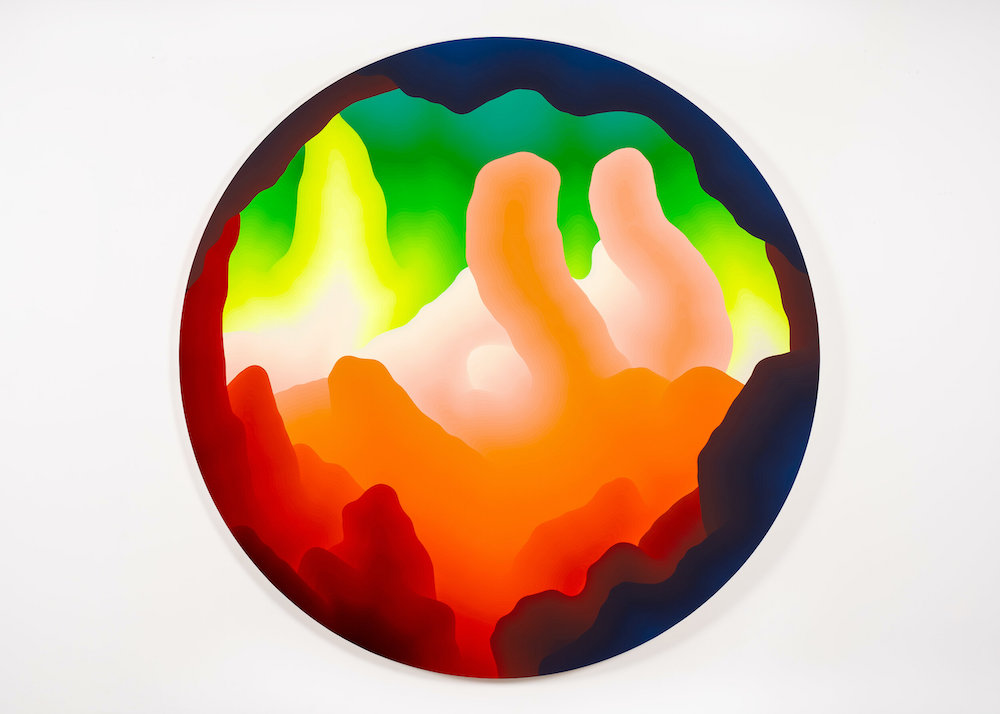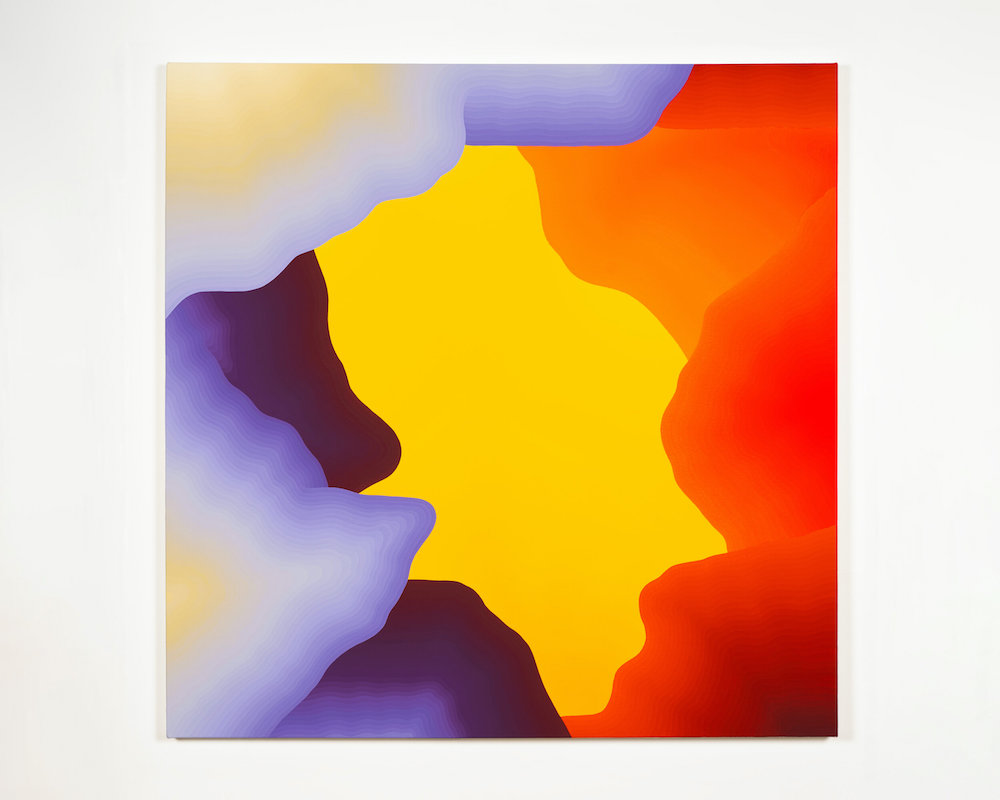Library Street Collective is excited to announce the first exhibition to take place in our new flagship gallery space. Light is a presentation of new works by Sam Friedman and curated by KAWS, running through April 3, 2021, at 1274 Library Street, with access off the Belt Alley.
Sam Friedman’s work is rooted in the tradition of American Abstract Expressionist painters who explored line, color, and the systematic application of paint. Within this heritage, Friedman examines methodical processes where repetition and self-imposed parameters lay the groundwork for his compositions but permit him the freedom to build each piece instinctively by hand. For the artist, this meditative and organic process is transfigurative and carries through to the viewer’s experience of the works. Growing up in upstate New York, Friedman seeks the state of mind that he encounters within nature. Though his most recent works have elemental and naturalistic qualities, they are built not by reference to the physical aspects of the outdoors, but by the flow and movement within nature to address questions about the practice of painting itself.
The sentient paintings within the exhibition draw from earlier works that distill natural phenomena (sunset, sunrise, rainfall) down to their most essential elements of line and color. Like the New York Abstract Expressionists of the 1950s, he explores abstraction in order to touch on concepts that are more existential in nature - life and death, love, spirituality, and a range of universal human emotions that allow the viewer to manifest their own pure and innate response. Friedman’s paintings share this poetic rather than direct reference to natural phenomena with Clyfford Still, and the two hold similar ideas about the continuous search for purpose through the exploration of repetitive forms. Still called his lifelong analysis “the organic lesson” and critic Harry Rosenberg described it as a process of “engagement, by which a mind is created.” Sol LeWitt also spoke of a calming of the mind for contemplative art making as the foundation of his practice, maintaining the importance of intuition, where serialization, repetition and progression allow for infinite variation. Another kindred spirit is evident in the later works of Jack Goldstein; although his machine-like process might seem antithetical to Friedman’s, there are parallels between the exhibition works and Goldstein’s thermal imaging topographies of the late 1980s. Goldstein’s paintings referenced computer-generated thermal imaging of earth, fire, water, and air in keeping with earlier pieces that captured “spectacular instants” in nature.
It is up close to his works that Friedman’s tenacity and presence of mind is most evident, where the expanses of color are broken down into long, incremental strokes. The progression of line work is arresting, particularly at the point where shapes change and emerge, breaking a steady expanse of slow transition to introduce another. The use of a long-haired brush is a vital part of his process, and he favors those reminiscent of ancient Eastern calligraphy and Sumi-e painting. This type of brush holds more paint than a standard paintbrush, and the responsiveness of its pliant hairs register subtle changes in pressure, direction, and speed with exceptional fluidity. The origin of this type of brush dates back to around 300 BCE in China, where the belief was held that painting unveils the mystery of the universe. Friedman opens his mind and follows the creation process through skilful handling of the brush, and little by little, his works take shape.
One of Friedman’s greatest contemporary influences is his friend and mentor, Brian Donnelly (KAWS). Sam spent 5 years as manager of Donnelly’s studio after graduating from Pratt in 2006. It was inside this Brooklyn studio that Friedman learned his remarkable work ethic and experienced firsthand what the life of a successful artist could be as he continued to hone his skills in paint. Donnelly’s masterful handling of a longhaired brush while laying down flawless and continuous strokes of paint, along with his use of intense color, left a lasting impression. It is with gratitude that we welcome KAWS as curator of Sam’s exhibition.



